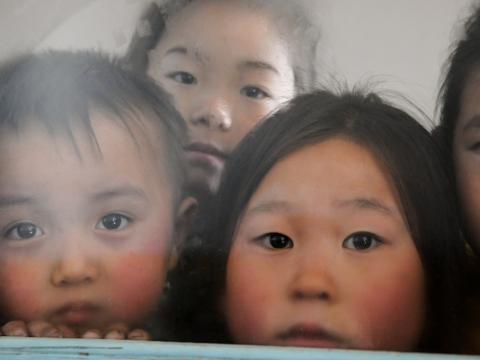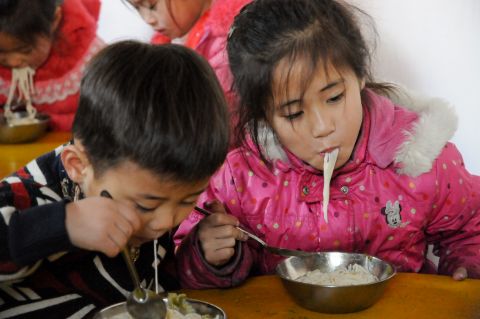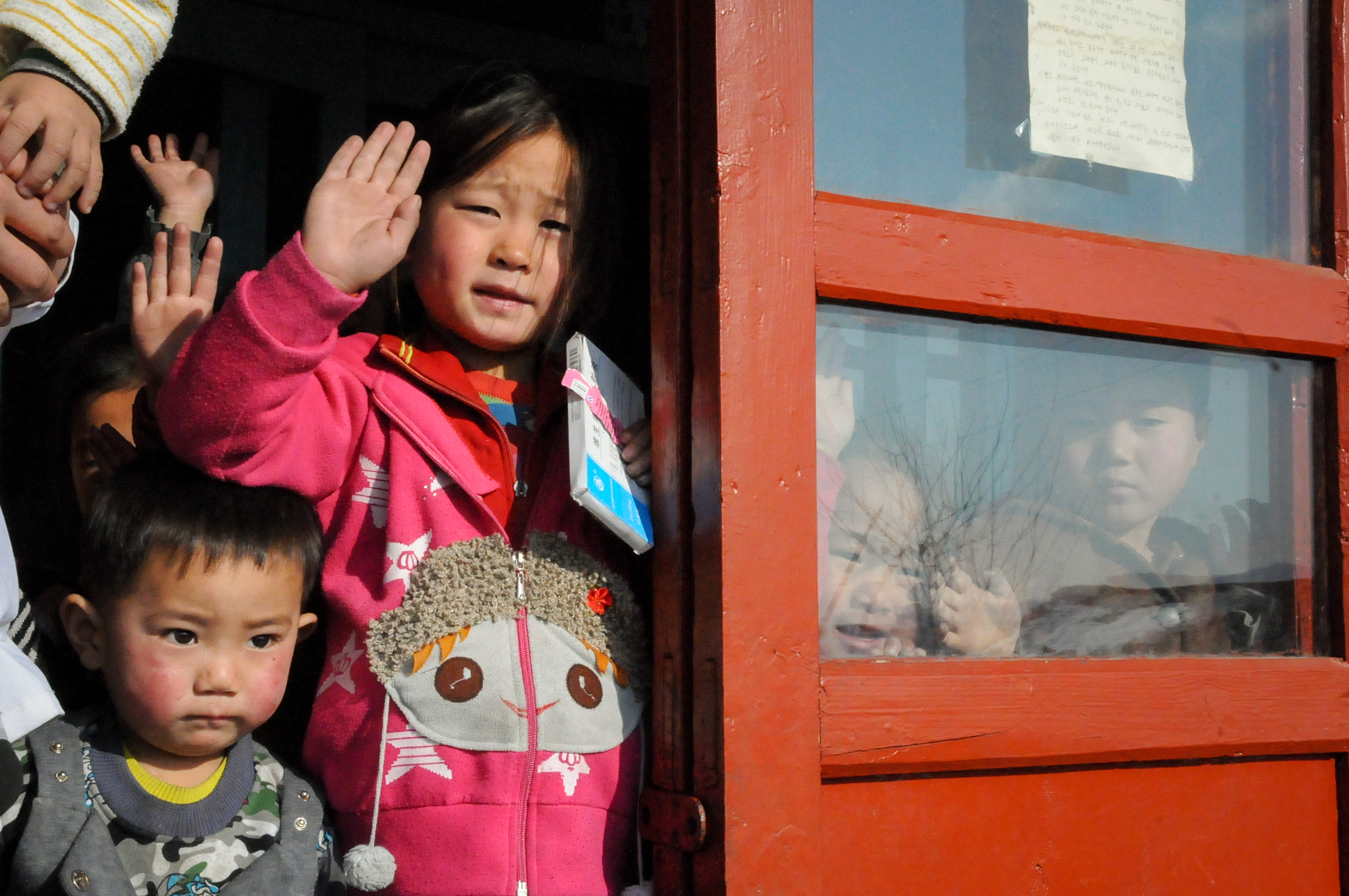First trip in - North Korea

Am I allowed to talk about that? Will that get me in trouble?
Coming from America, where freedom, uniqueness, creativity, and rugged independence are celebrated, nothing could be more different than in Democratic People’s Republic of Korea, more commonly known as North Korea. There, duty, honour, and order are celebrated instead.
Operating a small number of programmes, World Vision has worked there since the mid-1990s in response to the government’s request for humanitarian assistance.
Our team of 4 from World Vision had 2 local counterparts with us at all times, one assigned to me almost exclusively because I had the camera. They worked for the governmental department that assisted American NGOs.
Children at Namchil Nursery, South Pyongan province.
My counterpart was Mr Kim. He was 32-years-old and had recently completed his 6-year compulsory army service. He was soft-spoken, wore wire-rimmed glasses, and always had a briefcase in hand. He was always smartly dressed and professional.
In addition to Mr Kim, and our other counterpart, Mr Kim (who was a bit taller so we called him Big Mr Kim), 3-5 local officials met us at each village.
While Mr Kim and Big Mr Kim could wear whatever they wanted, the officials all wore the assigned uniform – matching grey button up shirt (buttoned to the top) and grey pants. Everyone wore a red pin portraying The Great Leader, Kim Il Sung, on their left lapel.
The Mr Kim’s were very kind, but they made it clear that we were guests and their country was to be respected and the rules followed.
I was to ask before taking any photos, and to follow what they decided. We were not to leave the hotel grounds. We were not to wander off when we were in the villages.
Rule after rule, I started to fear I would do something that could compromise our programmes. Fearful of asking a question they deemed inappropriate, of saying something that offended our escorts or their country, of doing something illegal which would prevent me from leaving the country.
I know our escorts and the officials were just doing their job, serving the best interests of their country, but as a storyteller, not being able to share what I saw felt like being muzzled.
I wasn’t allowed to sit down and spend time interviewing anyone. I was able to ask a few questions of a couple local women and teachers whom we met, but we were surrounded at all times with our counterparts and officials – how would you respond in that environment?
No photo - the most common statement I heard during my 6 days there.
I wanted to photograph the villages I saw and how hard people worked. How people in rural areas walked or biked everywhere, as there were no cars for miles. I wanted to show how women were still walking to wells in the freezing cold to fetch water.
But I’ll have to tell you about it instead.
My favourite sight was the young boys playing on the frozen patchwork of rice paddies and irrigation canals which presented a unique play space.
They had fashioned wood ‘uni-skates’- a flat board for their feet to rest on, then a narrow “blade” made of wood attached below the board. They squatted down on the skate, and propelled themselves across the ice with long sticks, acting as “ski poles”.
In a village, also referred to as cooperatives, all the homes look the same- living quarters are provided by the authorities. Most were white homes, one storey with tiled roofs, and flared on the corners like the typical Korean style.
I saw families drying cabbage on the fences – cabbage was one of the few spots of green in the landscape. Every village was surround by acres and acres of agricultural fields, brown and dry during the winter.
As a visitor I felt safe, but on the fringes of that comfort were raw reminders that we were special guests who needed to follow the rules.
In my next post, I’ll be sharing photos – which I did get approval to take – about the remarkable work World Vision is doing there.

Sim, age 7, (pink coat) slurps up her noodle soup. World Vision provided the wheat flour to the noodle factory that makes these noodles. South Pyongan province.
